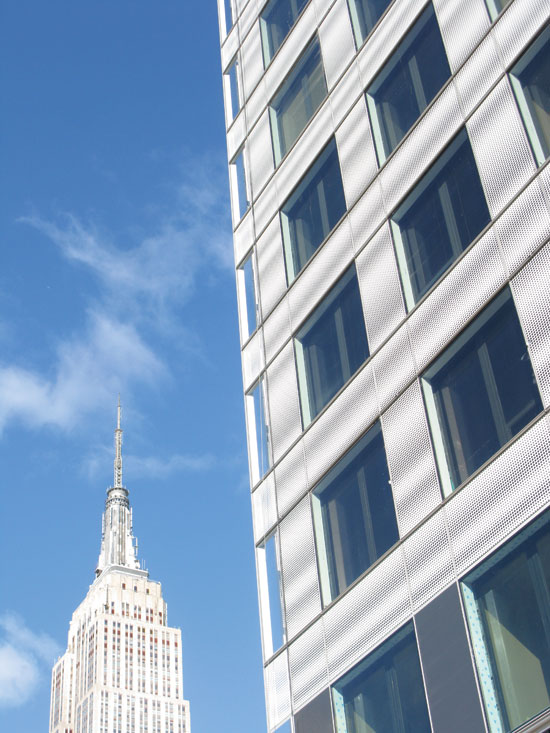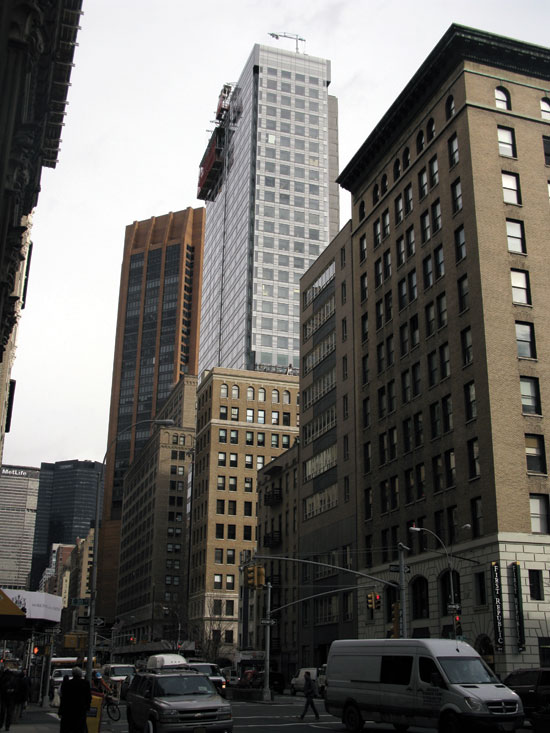About Face: Giving Existing Towers a Modern Edge With Recladding
Design Considerations: Recladding with Curtain Walls
Many high-rise commercial buildings exist in urban environments with façades that have become worn and deteriorated over time, producing an appearance that has become dated and unappealing. This could be true if the building has a façade made of traditional materials such as masonry, concrete, etc., or if it has an early version of a curtain wall system that has become obsolete. Either way, design teams and building owners will often cite a number of practical reasons to renovate existing façades with new curtain walls. The first is to take advantage of the advances in curtain wall technology that have occurred in the last 30 years or so. This is particularly true in glazed portions of curtain walls, but is also true in opaque, insulated components with improved energy efficiency and related operational cost savings. The methods of attachment and joining components and panels have also improved, allowing for better sealing and weatherproofing of the building skin.

Photo courtesy of Pelli Clarke Pelli Architects
New curtain wall façades (this photo and on previous page) on existing high-rise commercial buildings can transform not only the appearance and marketability of a building, but its energy performance and longevity as well.
In our current 21st century experience, a curtain wall system is defined as a complete exterior envelope that provides a non-structural, relatively lightweight, weather-tight covering on buildings. Being lightweight, it reduces both the load that must be supported and the manpower needed to erect it. Curtain walls are generally installed outside of the structural system of a building, running continuously past floor slabs and other structural elements. They are attached via tiebacks and connector plates directly to the building structure at floors, columns, and beams. As with early versions, all wind loads and dead loads imposed on the system are compartmentalized and transferred directly back to the building structure, which in turn needs to be designed to carry them.

Photo courtesy of Pelli Clarke Pelli Architects
Existing high-rise commercial buildings can appear to be outdated and in needs of façade maintenance compared to newer buildings or replacement façades.
In terms of their impact on people, new, well-designed curtain wall systems routinely achieve improved comfort for occupants. They also provide ample daylight to spaces, allowing not only human benefits, but also the opportunity to turn off electric lights, thus reducing air conditioning loads and energy costs further. In tall buildings, new glazed curtain walls offer exceptional opportunities for dramatic views of the surrounding urban landscape. All of these features, coupled with a new, up-to-date appearance, feed directly into the ability of a building owner to market rental space within the building. In particular, office buildings, mixed-use buildings, condominiums, and other high-profile properties benefit from a well-designed curtain wall upgrade by allowing them to be sold or leased as first class or Class A space. The particulars will vary from building to building, of course, but it is easy to see where an investment in the exterior building skin can produce favorable paybacks on many fronts.









